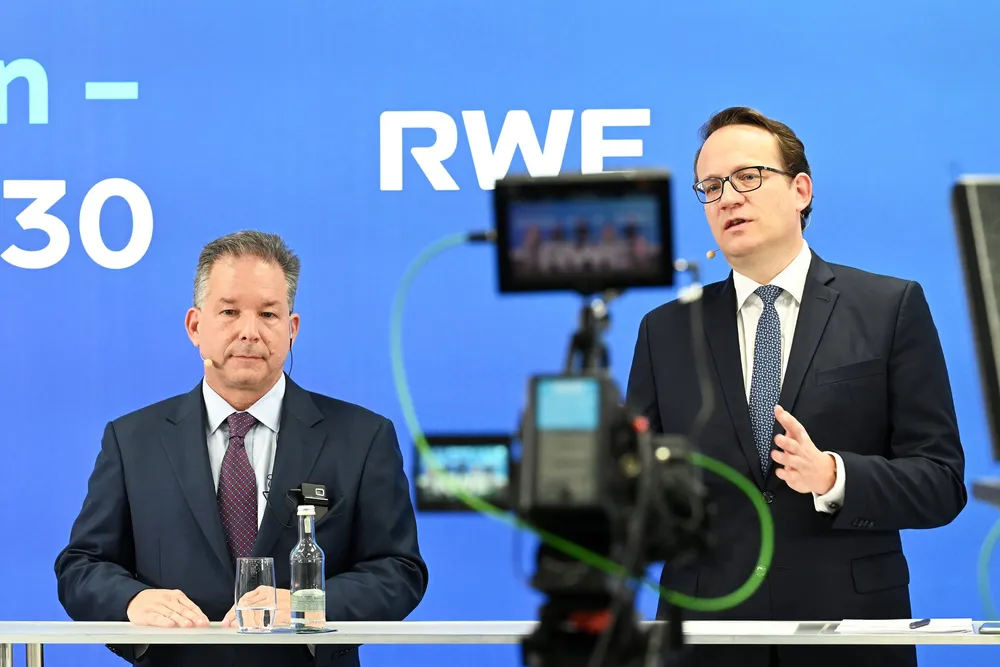Why developers have less room for error in this year’s UK renewables auction
'Tolerance for mistakes just shrank' as AR7 risks becoming an 'outcome in search of an auction' with a dizzying array of changes to the tender system, warn analysts

Industry analysts have welcomed new changes to the UK’s renewable energy auction round but warned that with the Contracts for Difference (CfD) scheme “multiplying in complexity” there is less room for error than ever for developers.
The government this week revealed the Administrative Strike Prices (ASPs) for its upcoming renewable energy auction, AR7, along with further changes to how this year’s round will work.
That includes for the first time introducing a regional divide into the process, with Scottish offshore wind projects in line to receive more money for their power than those further south.
This follows hot on the heels of a raft of other radical and in some cases controversial changes to the CfD structure. Most notably, fixed bottom offshore wind projects will for the first time be able to bid even if they have not yet secured full planning permission, massively swelling the pool of eligible projects.
This all comes as the Labour government and energy secretary Ed Miliband strain every sinew to chase down the targets in its ambitious Clean Power 2030 Action Plan. That aims to deploy 43-50GW of offshore wind, up from around 16GW today, as well as roughly doubling onshore wind capacity to 27GW and trebling solar to 47GW.
Those targets all aim to serve the ultimate goal of all-but eradicating fossil fuels from the power grid by the decade’s end.
Administrative strike price changes ‘reflect continuing cost increases’
Analysts have generally responded positively to the change in ASPs – the maximum price the government is willing to pay for power from a given technology – compared to last year's auction, AR6.
“Broadly speaking, the mood is one of cautious optimism,” wrote Ana Musat, executive director of policy and engagement at RenewableUK, in a blog post.
“But caution remains, given the difficult market conditions, and developers are reporting increases in costs of raw materials like steel and rare earths, supply chain bottlenecks (particularly around vessel availability), cables, switchgears and transformers, with increased demand across the world driving up costs.”
In that context, it makes sense that ASPs have gone up for AR7 to “reflect the cost increases”.
Offshore Renewable Energy Catapult analyst Andrew Yardley wrote that the higher strike price for AR7 reflects the “continuation of rising costs in an industry that is being disproportionately affected by inflation to core materials and components.”
“We are also in a period of stubbornly high interest rates, which hamper the project economics of offshore wind.”
They have also increased the price they are willing to pay to onshore wind, which he noted is in spite of it now offering a longer CfD term, up from 15 years to 20, “which will be welcome news to the onshore wind community.”
Offshore wind budget split for Scottish projects
The government has for the first time decided to split the prices that it will award renewables technologies along zonal lines for fixed bottom offshore wind.
In Pot 3, for fixed bottom offshore wind, the government said that “Maxima will be applied to separate the clearing prices” of offshore wind projects in Scotland and other offshore wind projects.
This comes shortly after energy secretary Ed Miliband rejected a hotly debated proposal – one deeply unpopular with most renewables developers – to implement zonal power prices in the UK.
Writing on LinkedIn, John MacAskill, group growth director at consultancy OWC, described this as a “structural kludge to deal with the distortion” of transmission charges, “which continue to punish Scottish projects by £7–9/MWh, often more.”
“What’s happening here is CfD architecture attempting to do the job of market reform, compensating for a transmission regime that still hasn’t been sorted.”
“It’s not zonal pricing,” he said. “But it is a workaround.”
The new structure will, according to Civetta, “create challenges for developers in evaluating auction outcomes.”
But, crucially, it also “has the potential to decrease the overall cost to the consumers by avoiding applying the higher price likely needed by Scottish capacity to what will likely be cheaper English capacity."
Another change is that fixed bottom offshore wind projects can now only submit one sealed bid into the auction round.
Grace Millman, senior energy analyst at Regen, observed that these projects now face a “stricter auction format with just one sealed bid, so there is no room to flex bids based on the competitiveness of the auction.”
That, as MacAskill put it, means “no wiggle room” for developers.
Trying to do too much at once?
These further subtle but significant tweaks to the auction architecture come, as referenced, after a raft of other changes announced by the government earlier this month following a consultation on the CfD format.
“At the same time, AR7 is doing a lot of heavy lifting and its design reflects the broader difficulties that authorities worldwide are having with structuring auctions in a fast moving market.”
This year’s reforms – which also include the addition of a Clean Industry Bonus, a push to support floating demonstrators, and allowing Miliband to peek at anonymised bids in certain circumstances – are all targeted at industry concerns, he said. But they also see the auction process “multiplying in complexity.”
“AR7 risks becoming an outcome in search of an auction, which could undermine the competitive principle that has functioned as a backstop in the process up to now.”
MacAskill concurred. “The potential problem,” he said, is that the auction is “trying to do too many things at once: enable floating, protect fixed, de-risk budget exposure, soften grid locational bias… all while staying within Treasury’s comfort zone.”
One of the implications of the increased complexity is that developers “need to sharpen bid strategy. The tolerance for mistakes just shrank.”
(Copyright)